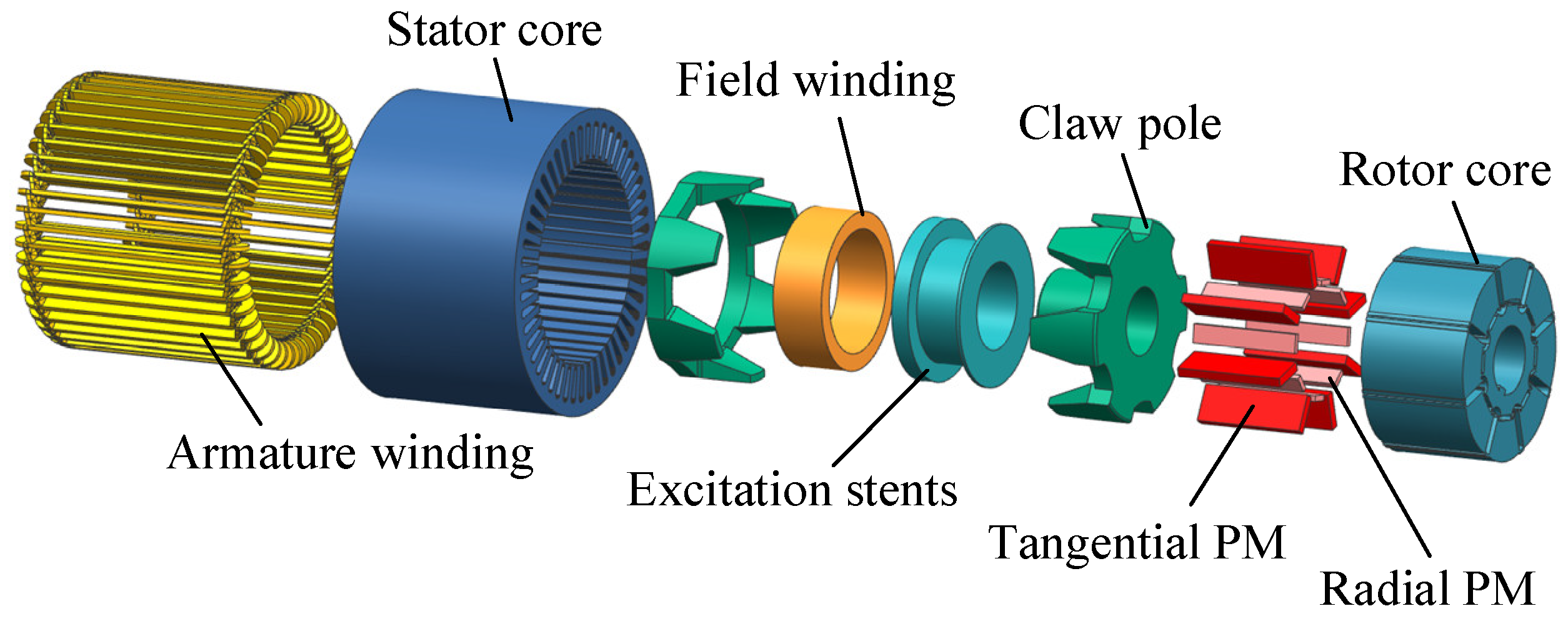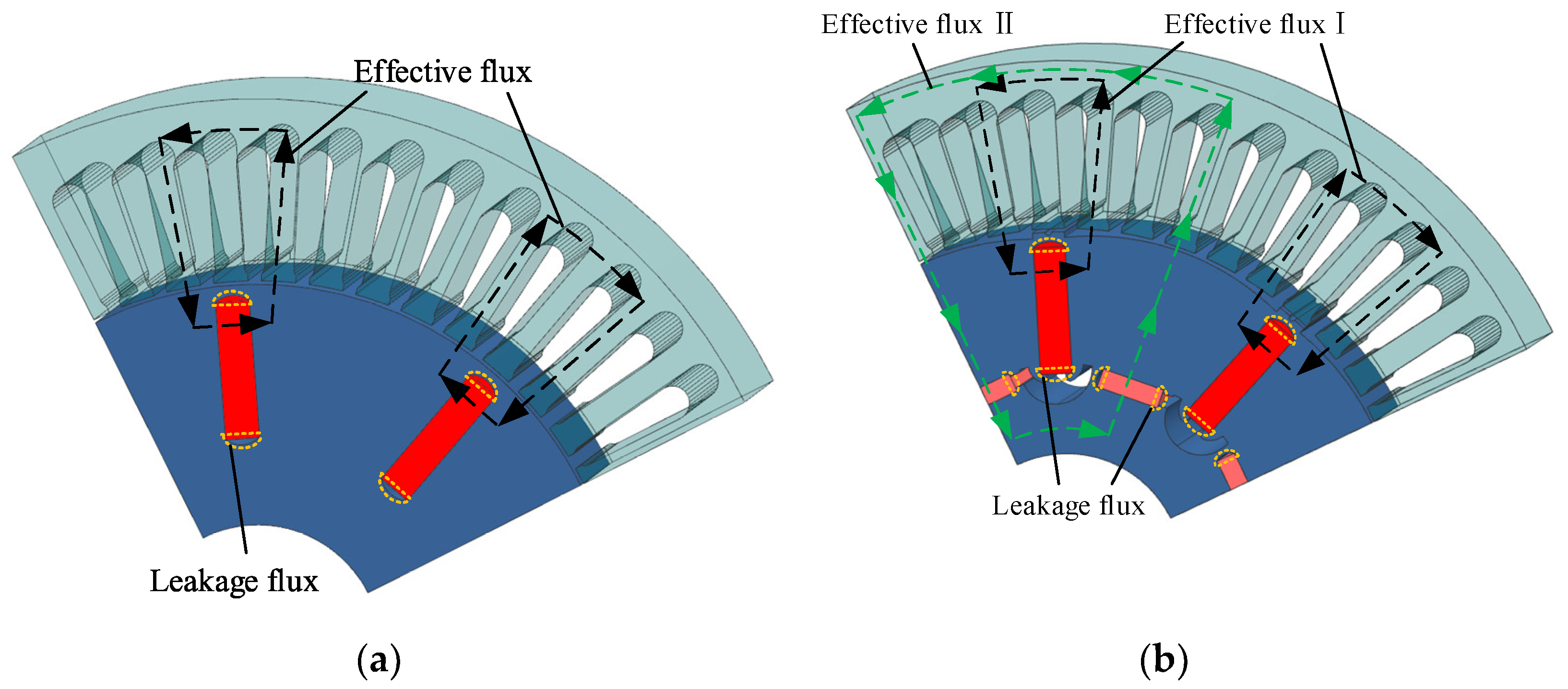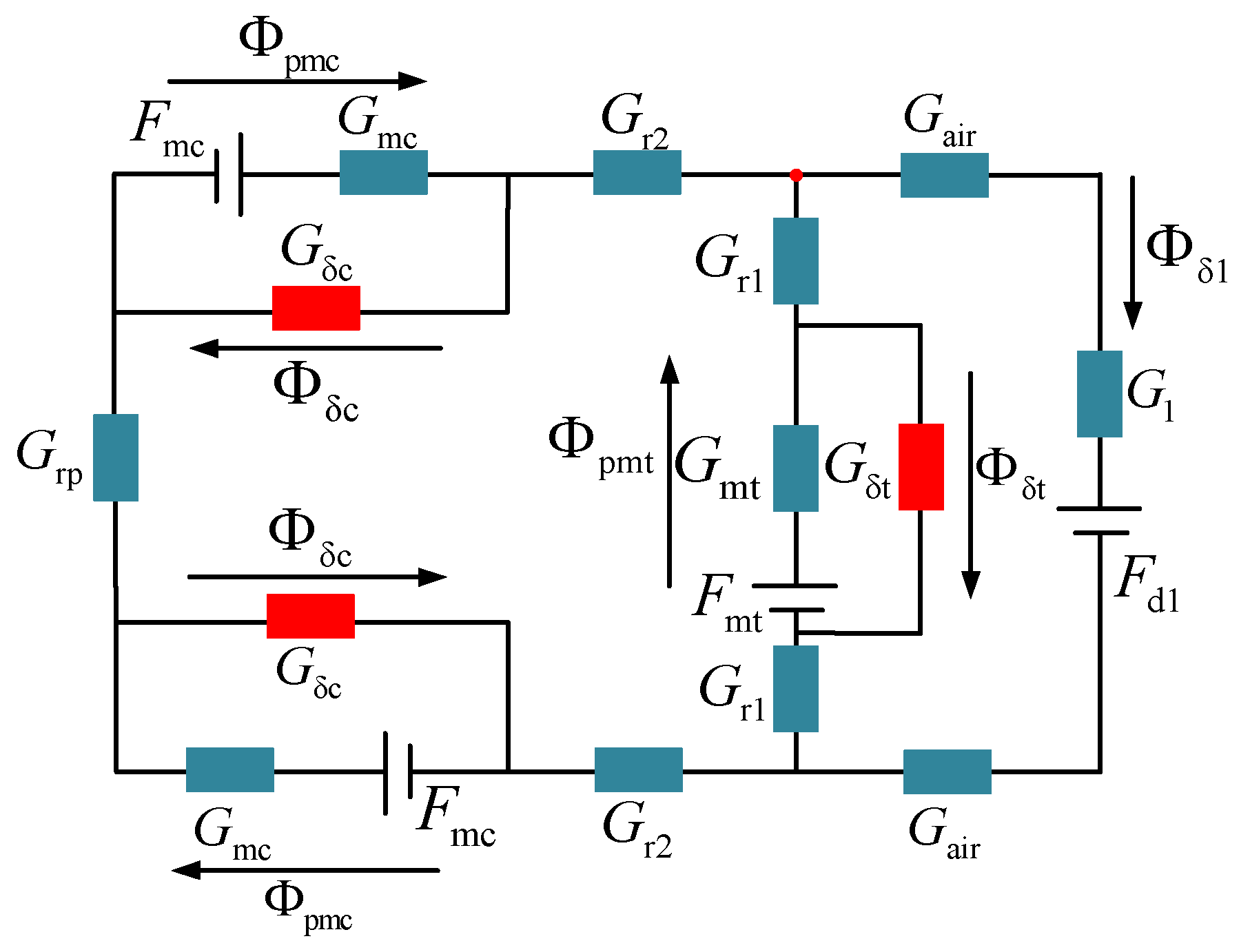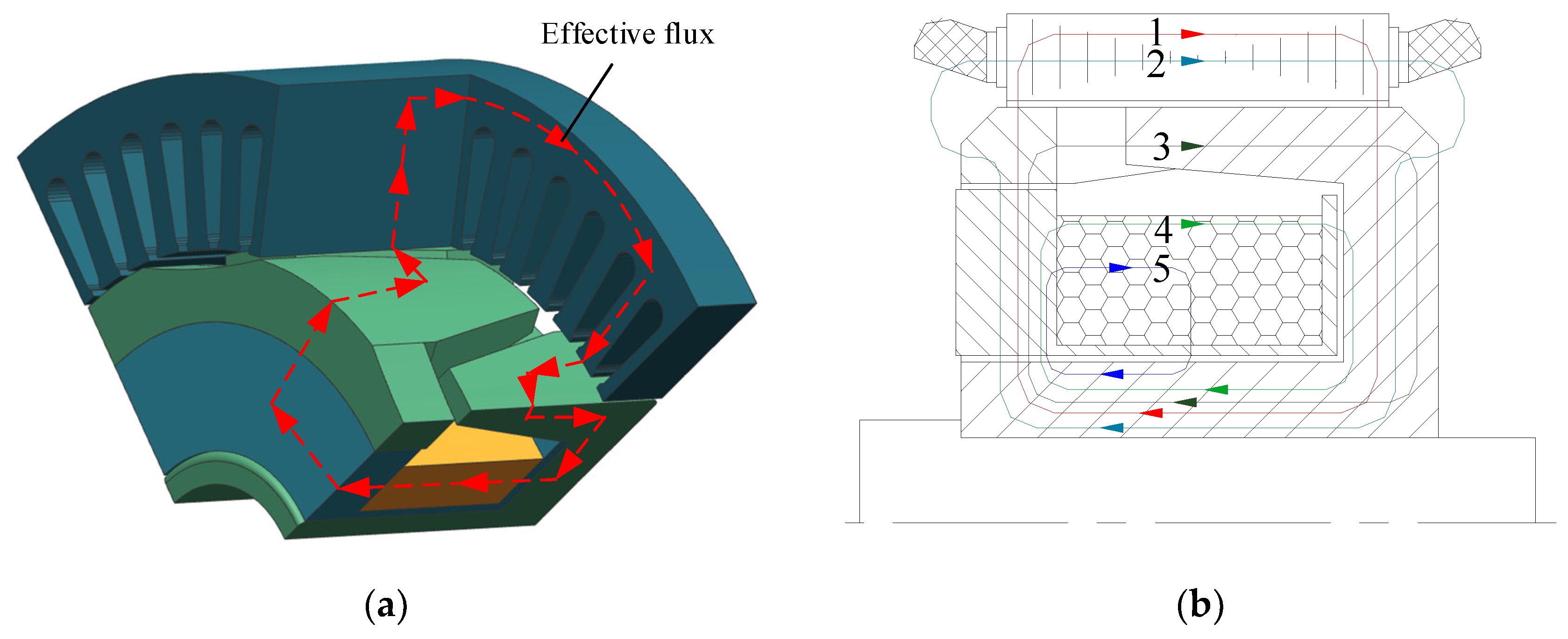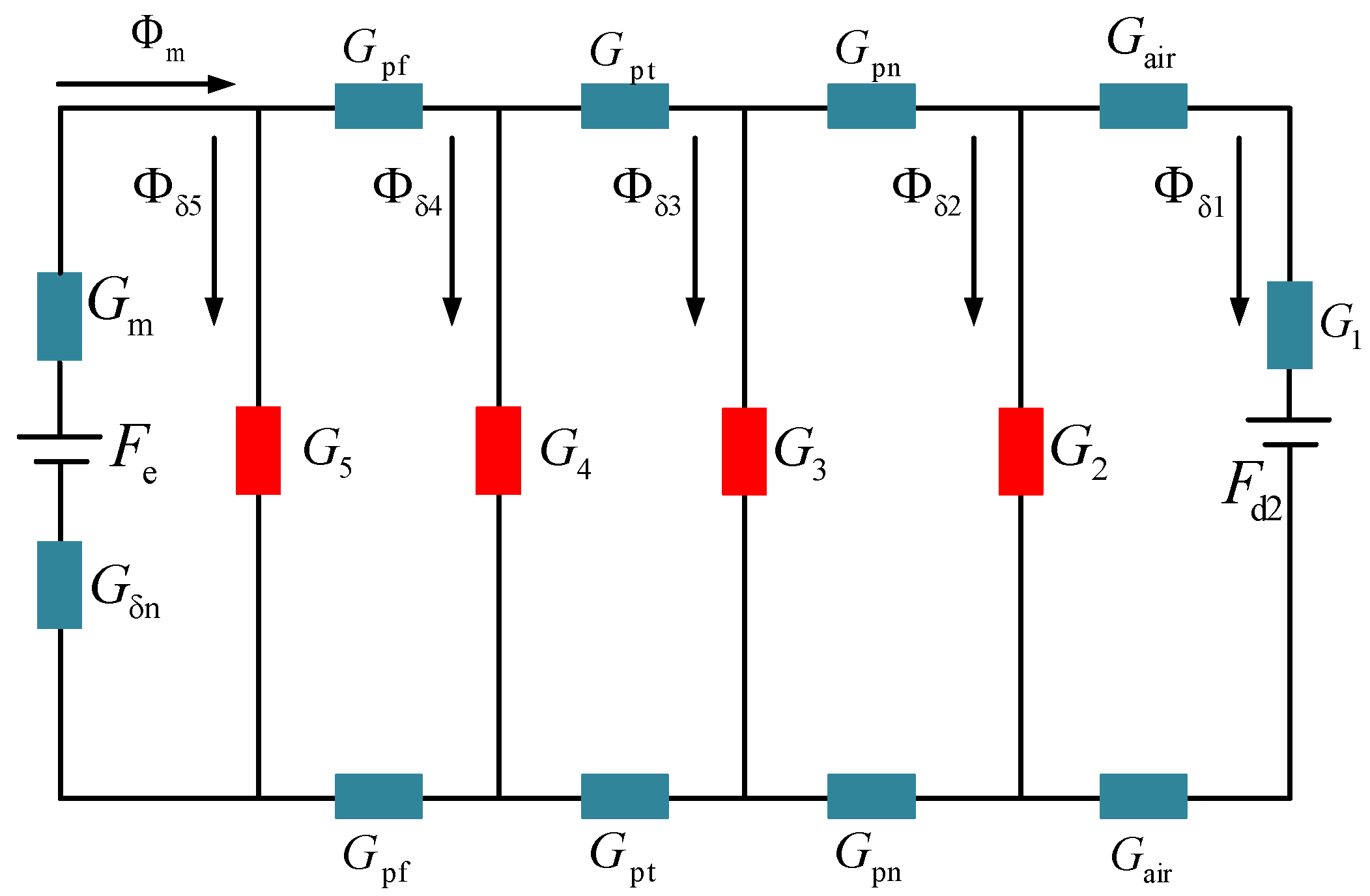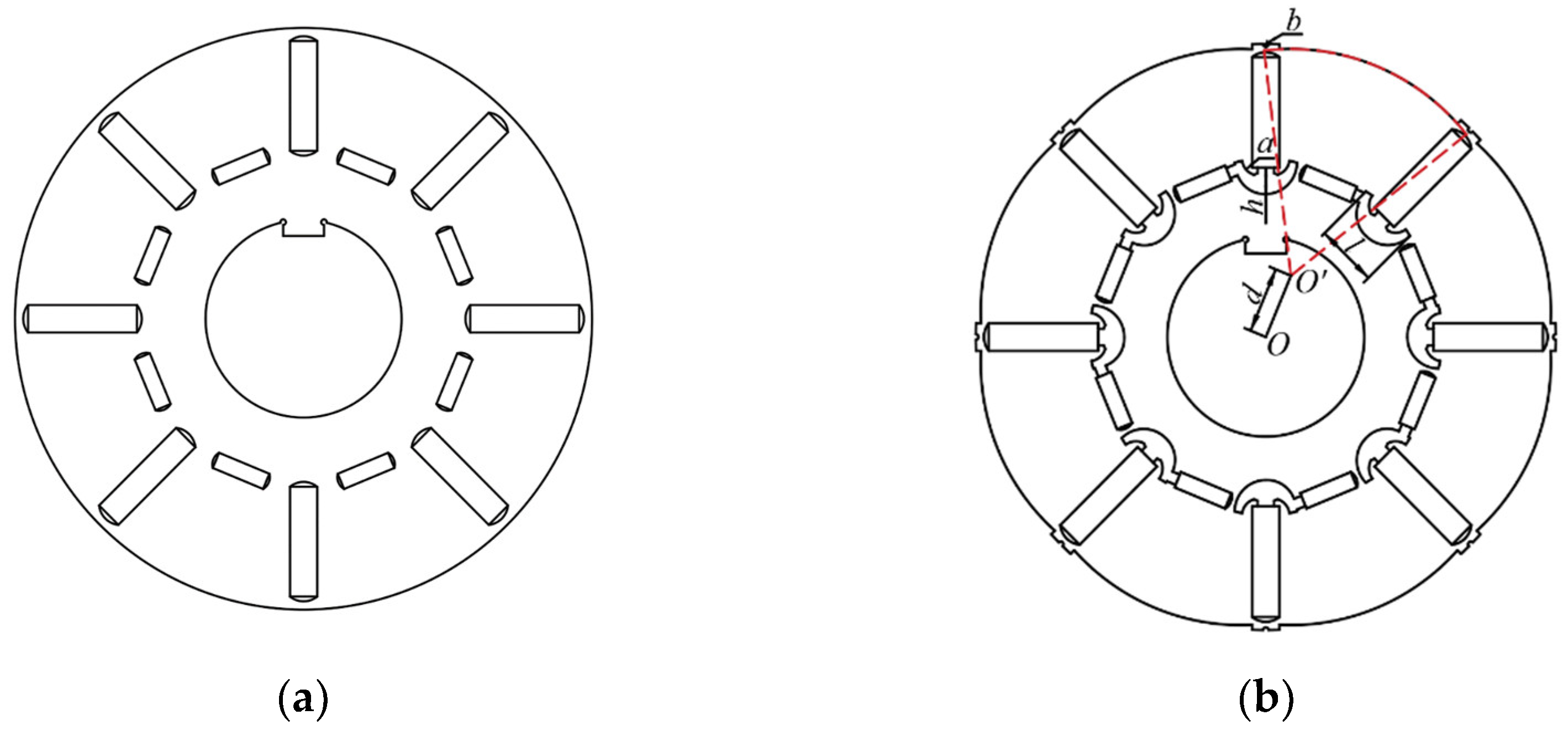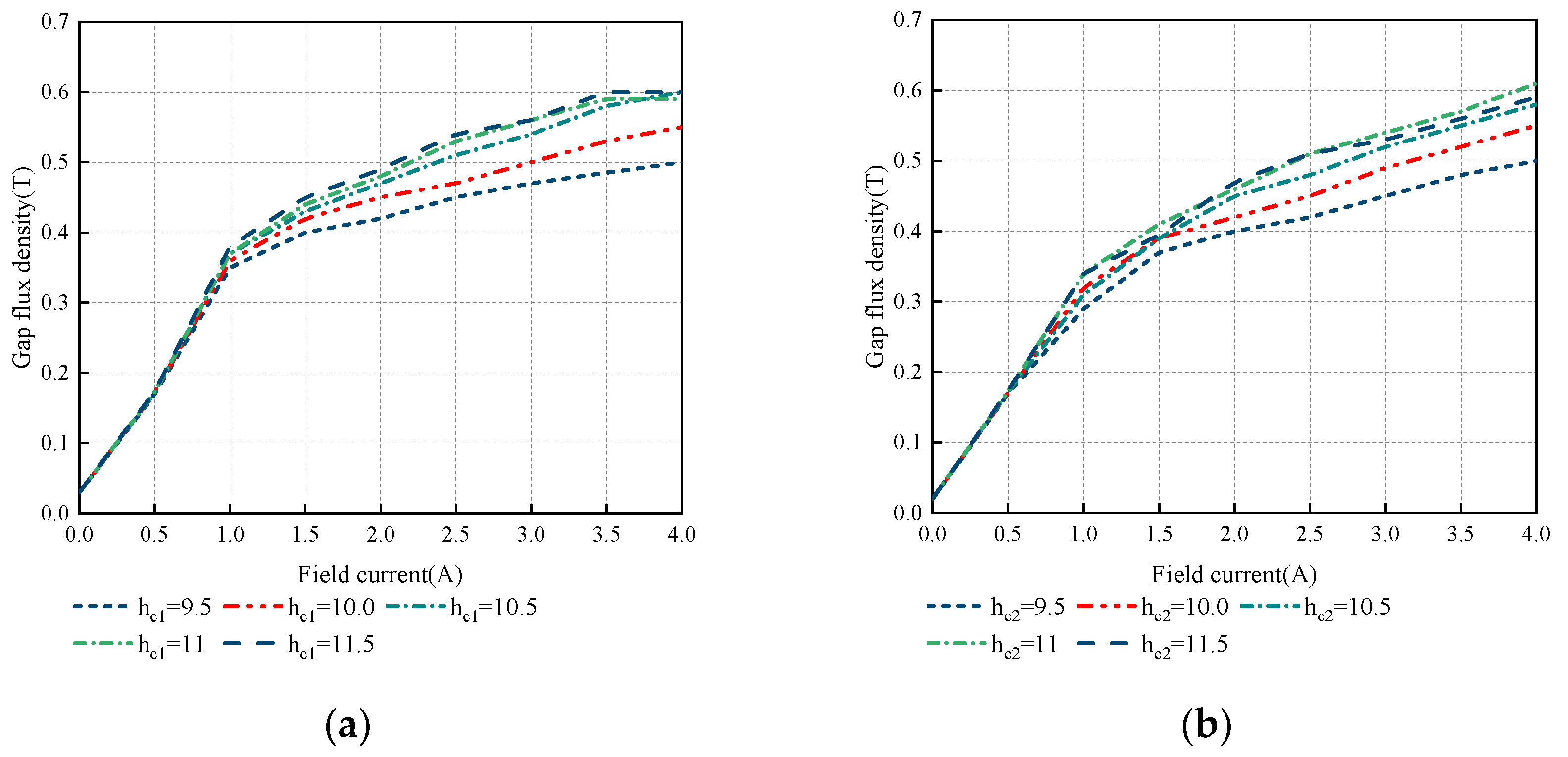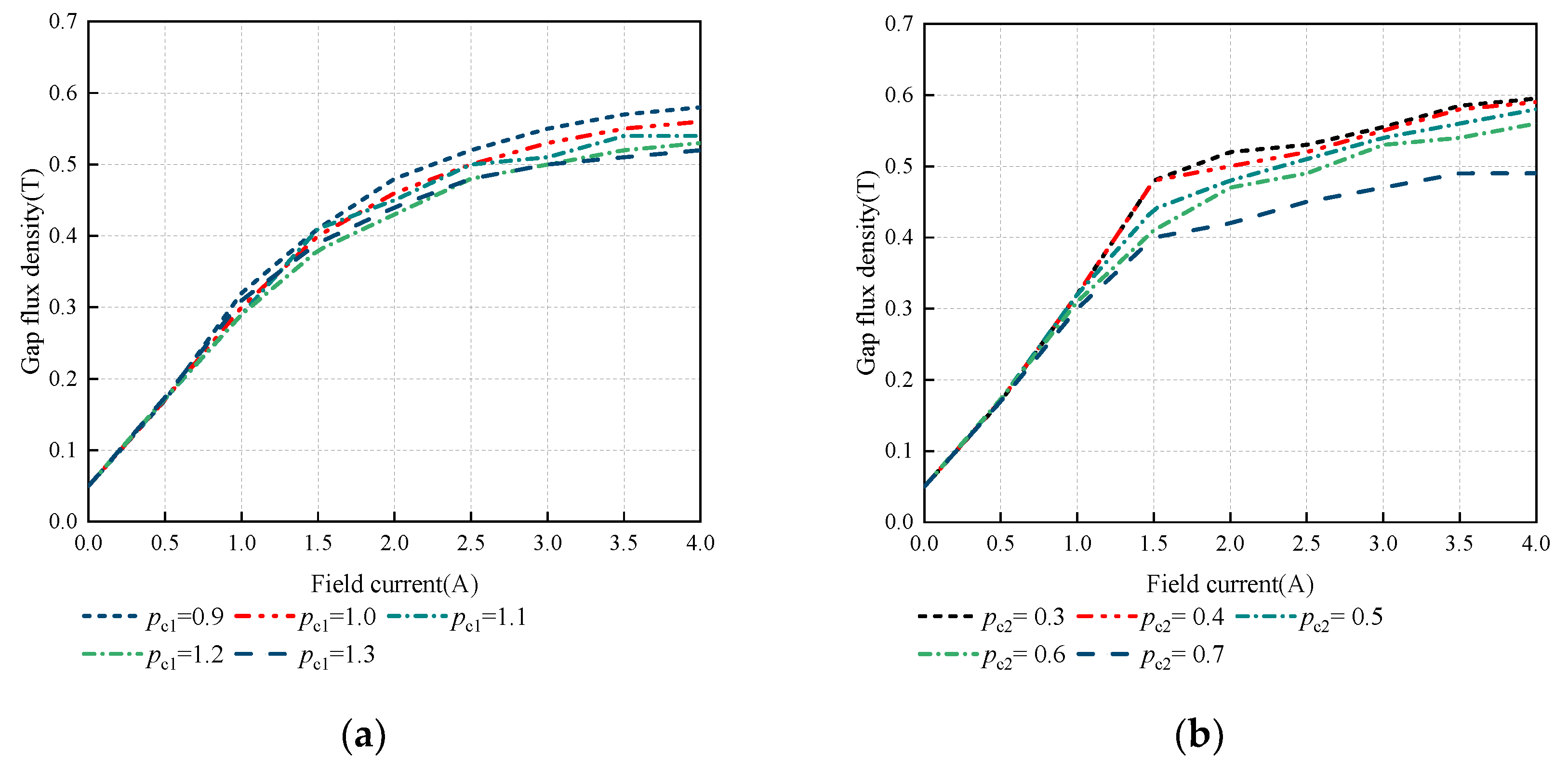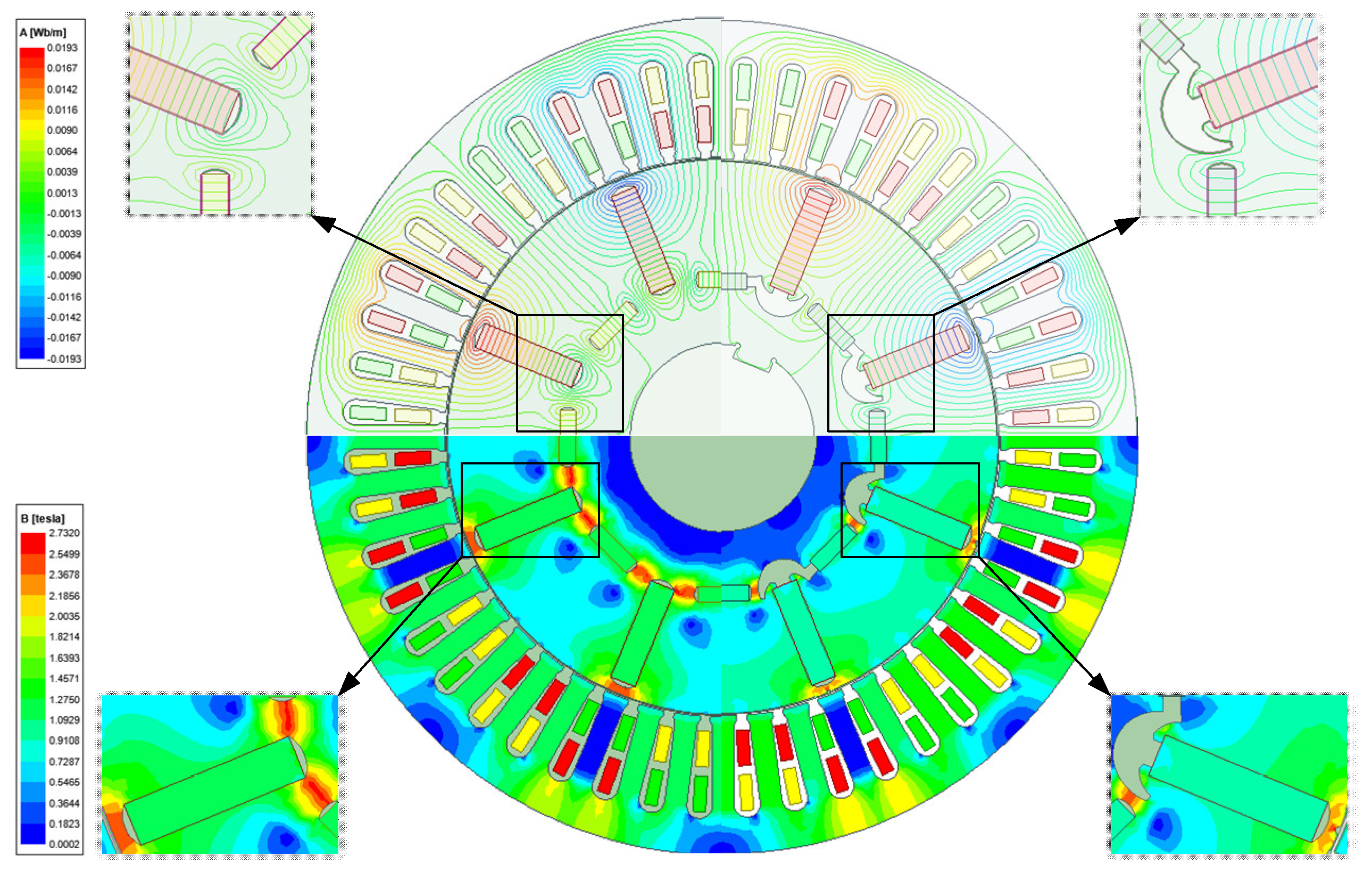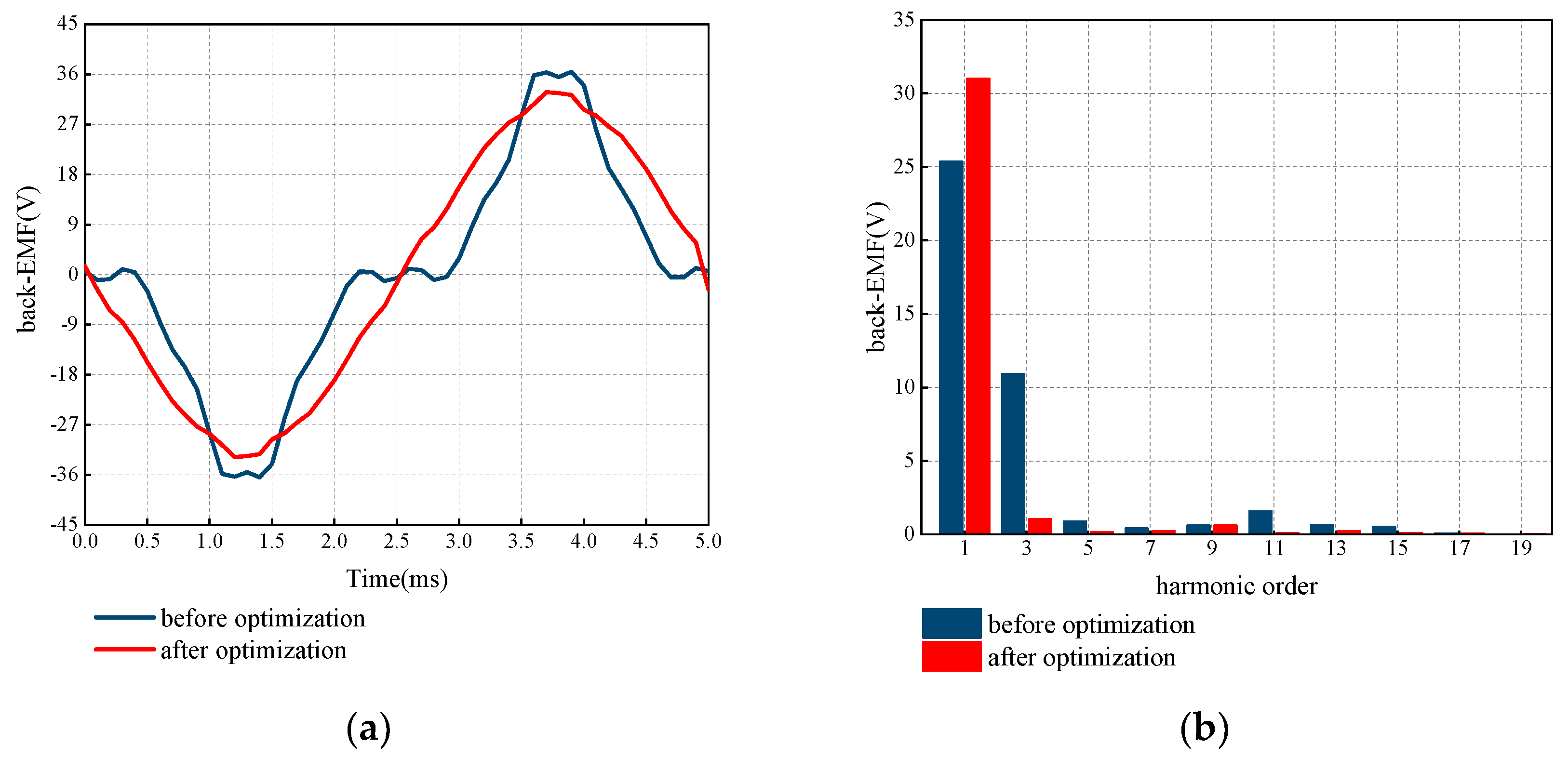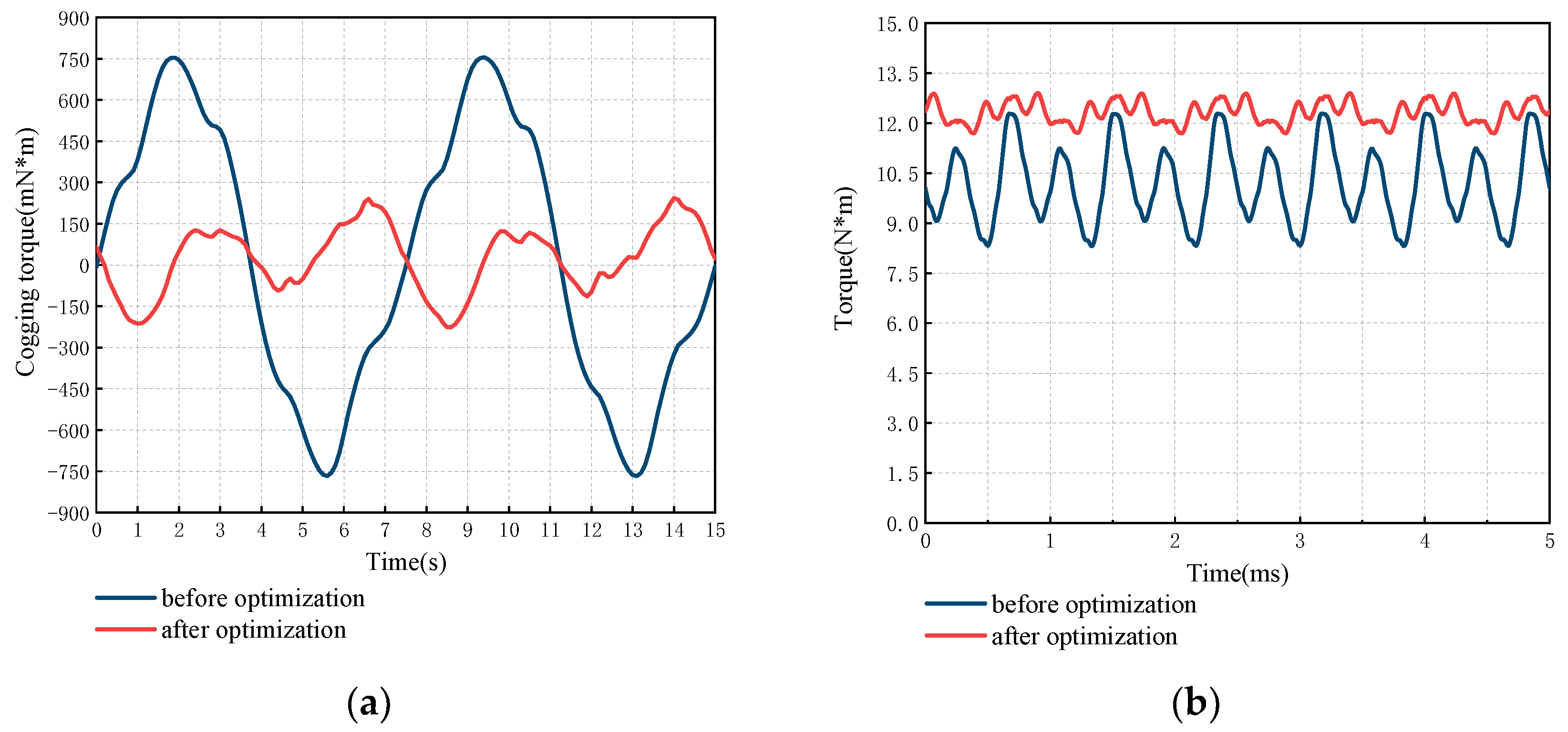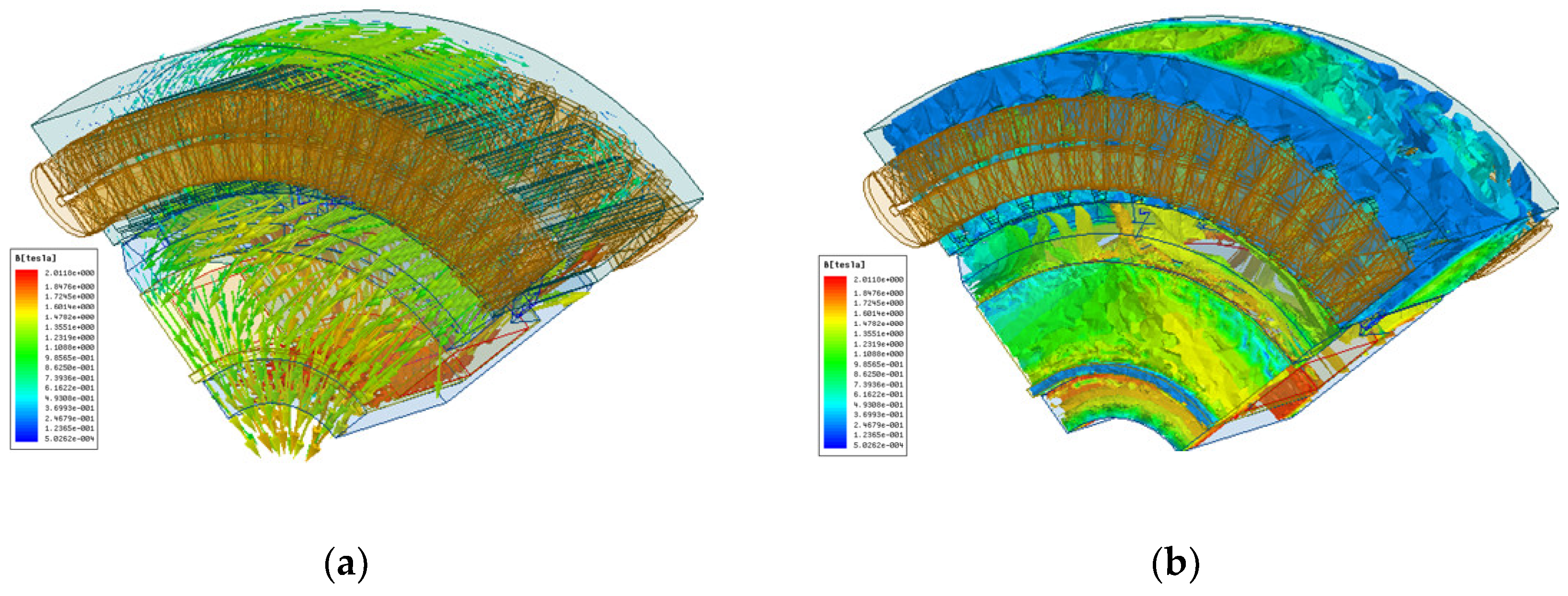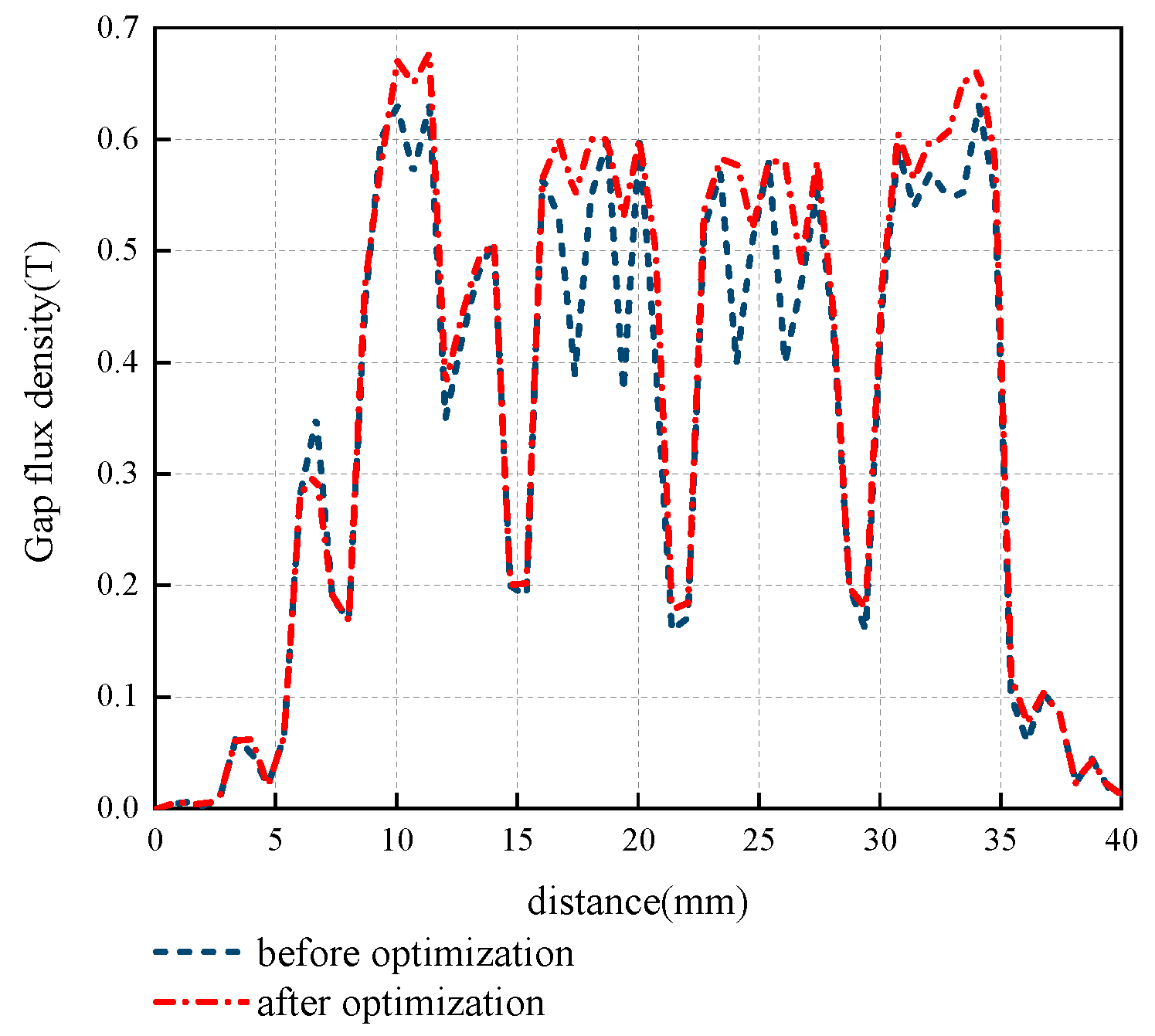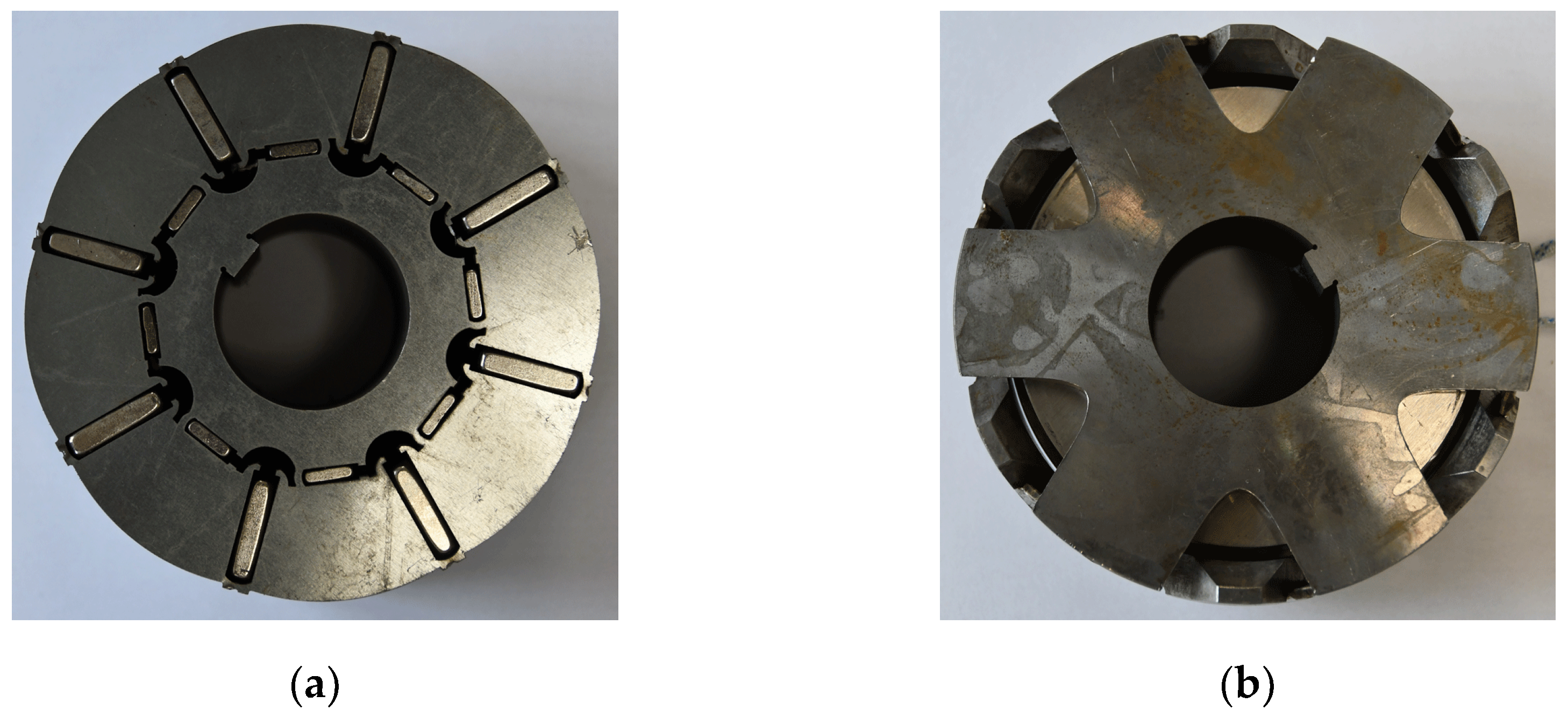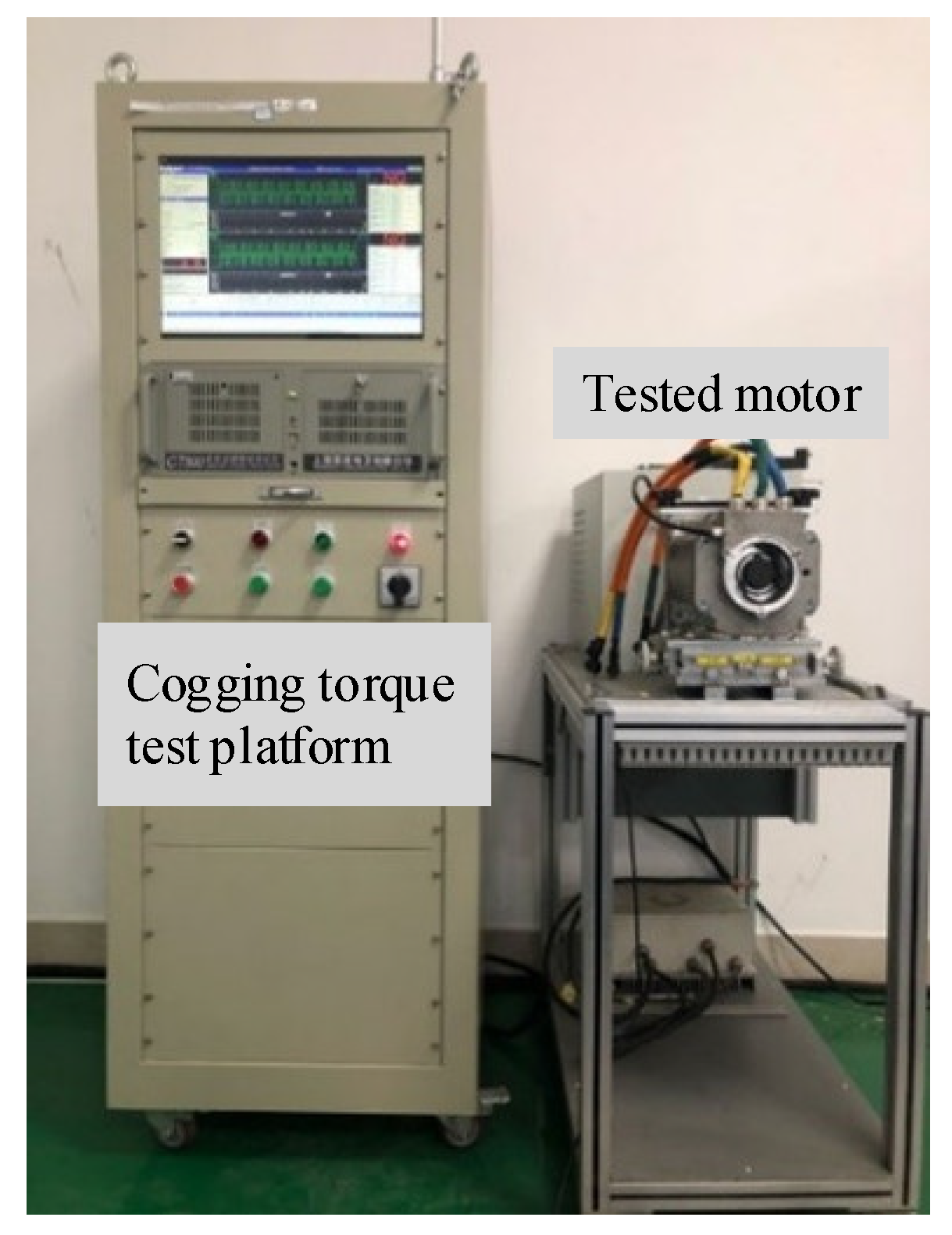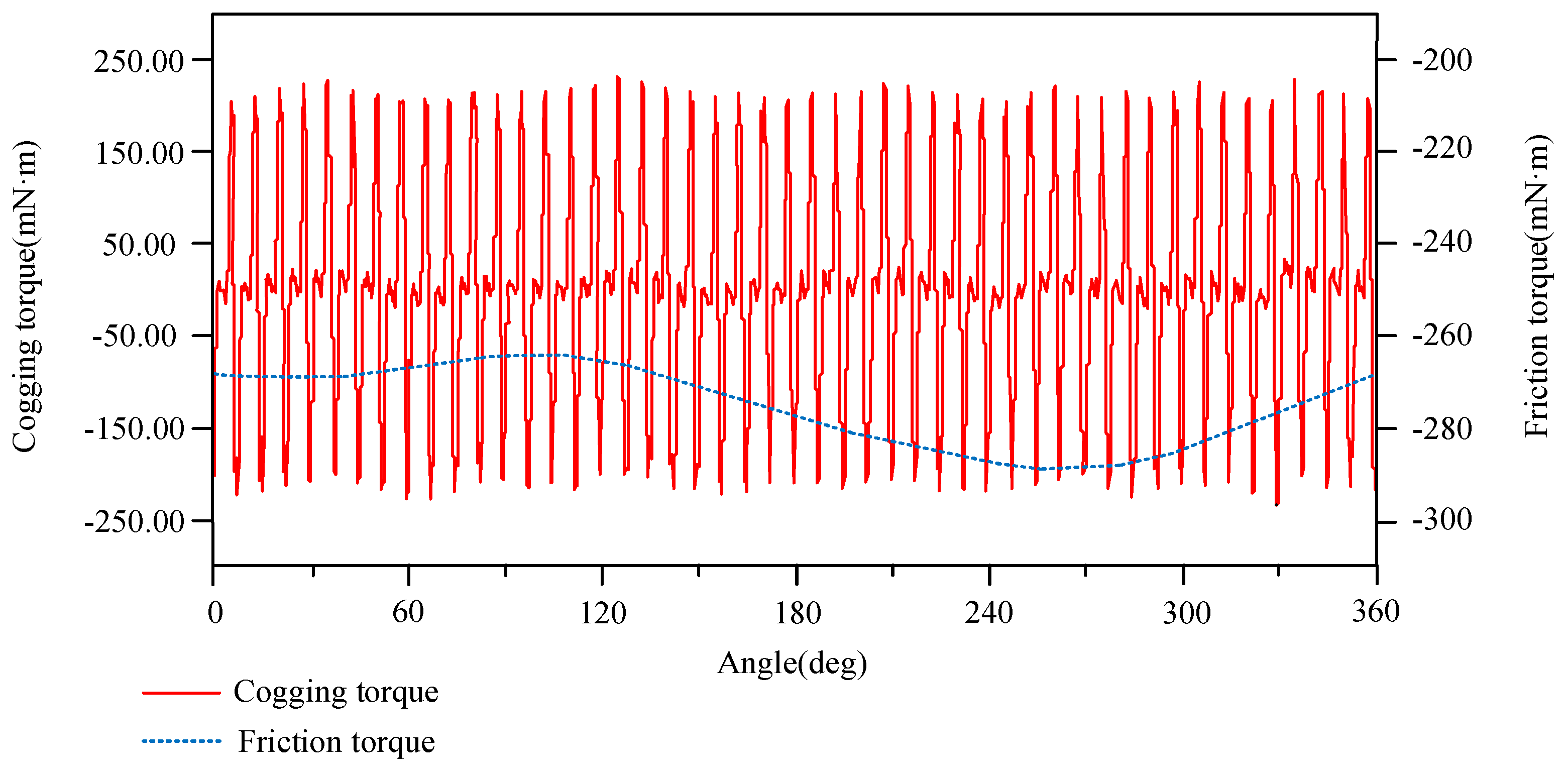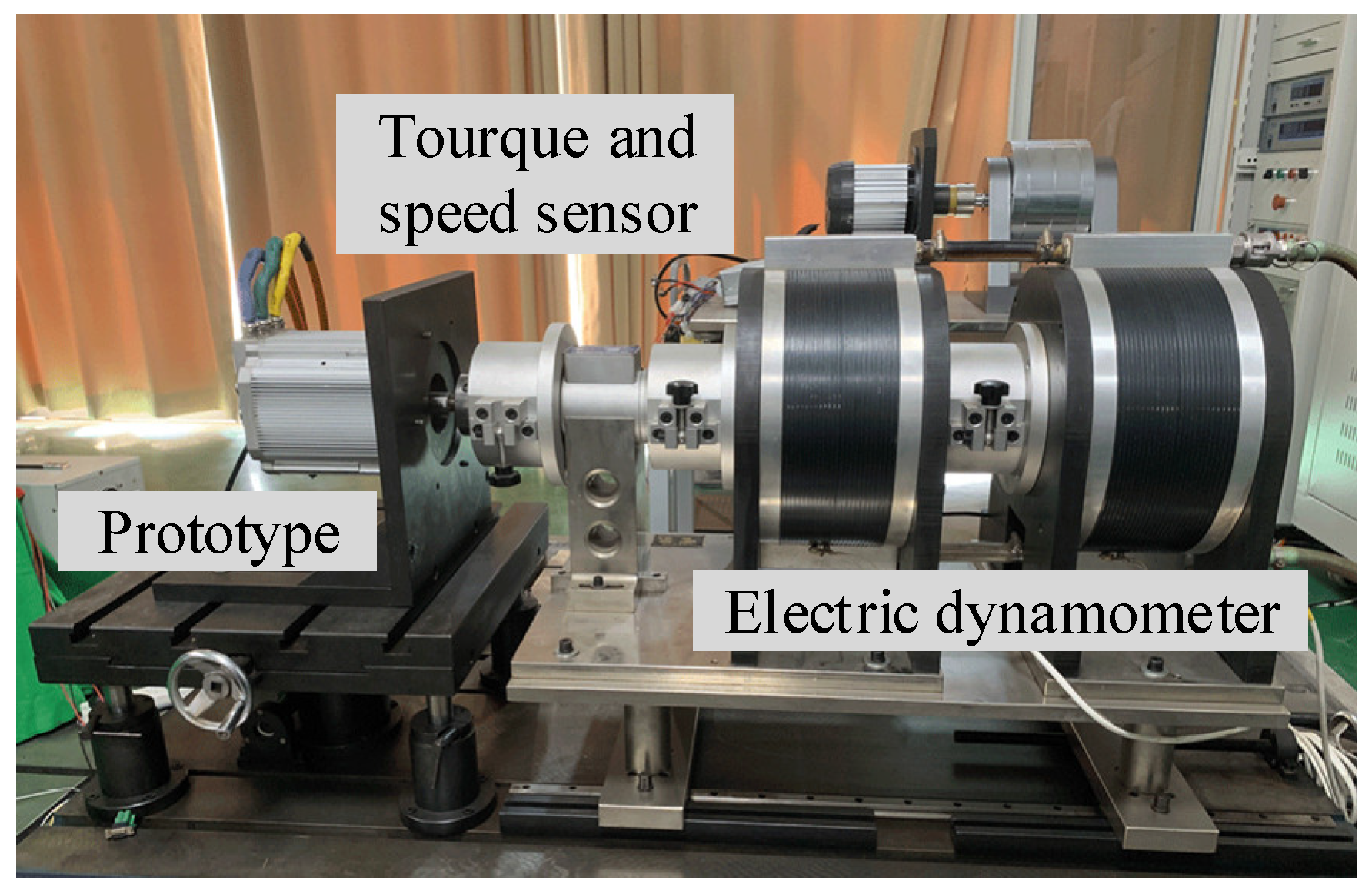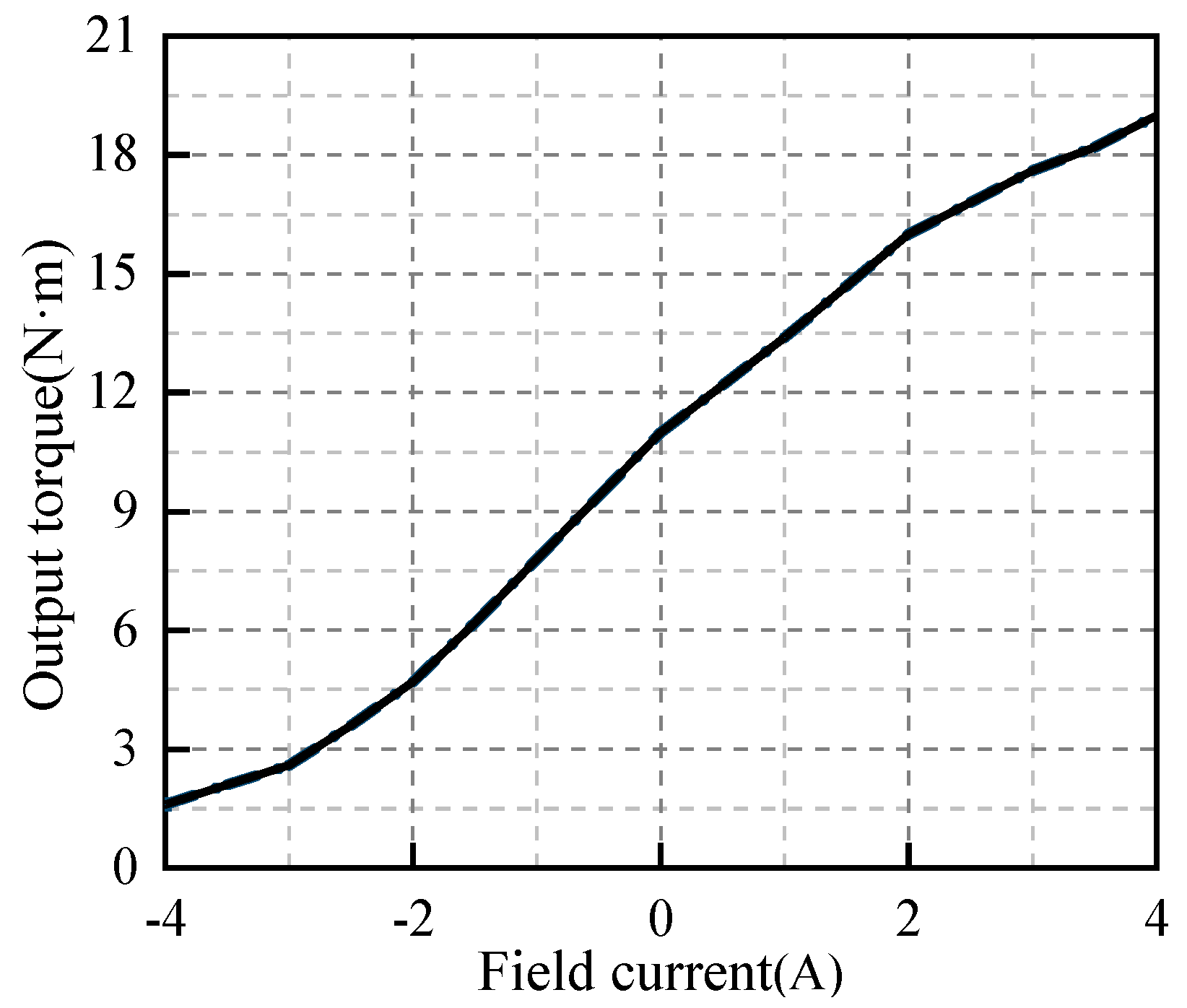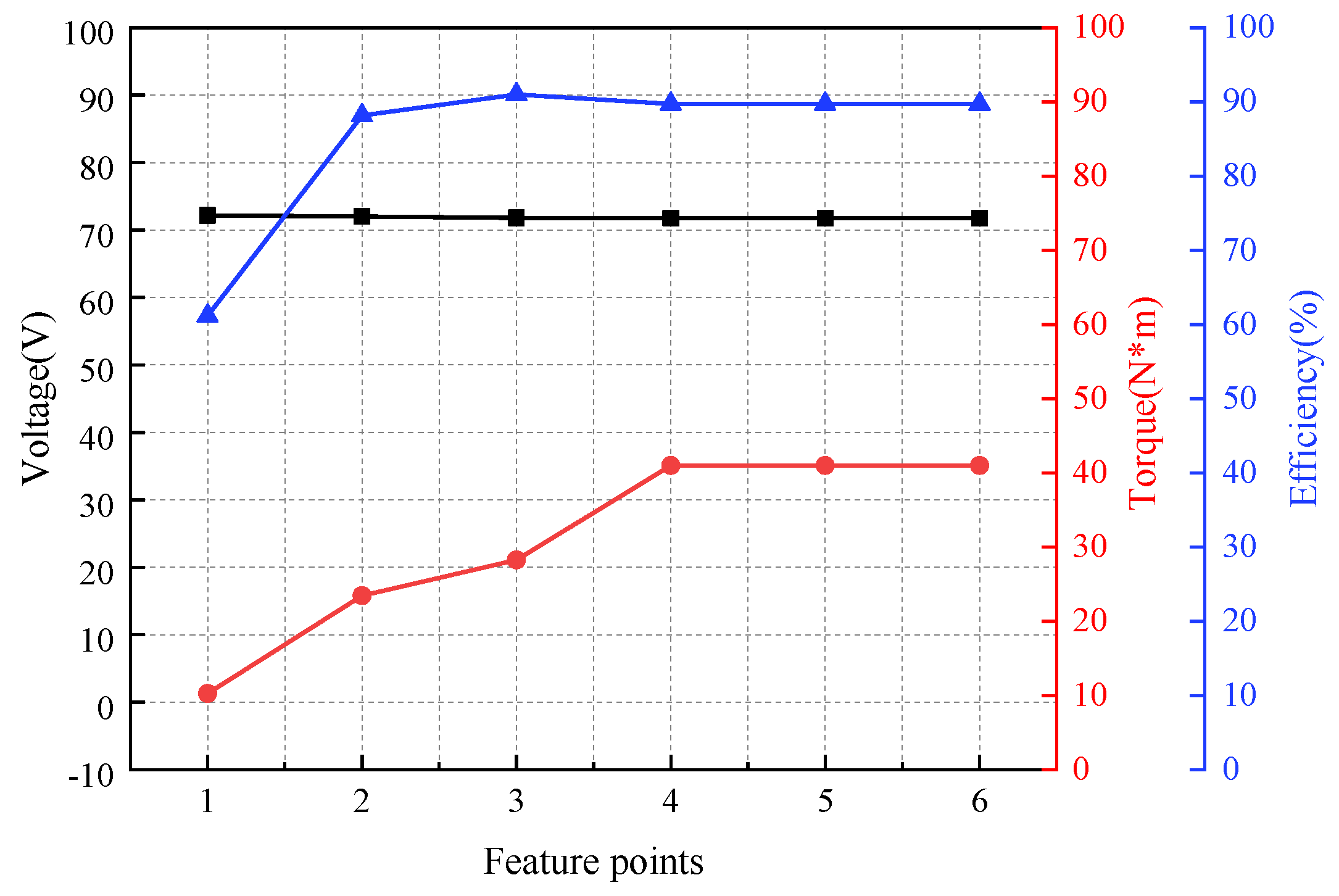To obtain a more reasonable motor geometry, the rotor structure is improved in this paper. The combined magnetic pole permanent magnet rotor changes the shape of the magnetic barrier and uses the pole surface eccentric structure. The parameters of the claw pole affecting the air gap flux density were optimized for a brushless electric excitation claw pole rotor. The parameters are optimized by an appropriate optimization method to analyze the motor performance under rated state.
3.1. Structure Optimization of Combined Magnetic Pole PM Rotor
At present, the design optimization of motors can be divided into single-objective optimization and multi-objective optimization, and single-objective optimization has certain limitations because only one objective meets the requirements in design optimization. References [
16,
17] respectively carried out single-objective optimization of the motor with minimum cogging torque and maximum output torque as the objectives. This method can’t guarantee other key performances when the motor obtains excellent performance in one aspect, which leads to a decline in the comprehensive performance of the motor compared with previous methods. Multi-objective optimization requires multiple optimization objectives to meet the requirements at the same time, which is of great significance for improving the comprehensive performance of the motor. Reference [
18] used sensitivity analysis method to evaluate parameters under various driving modes. In different driving modes, multi-objective optimization was carried out for motor parameters with the goal of maximum output torque, minimum torque ripple, and minimum core loss, which improved the driving performance of the motor. Reference [
19] carried out multi-objective optimization of the motor structure with the goal of minimum cogging torque and minimum torque ripple and verified the effectiveness of the proposed rotor through the comparison of simulation and experimental results.
The combined magnetic pole PM rotor is the main component of the motor, and its magnetic barrier is the key to affecting the performance of the motor. To obtain a motor with a higher performance index, it is necessary to optimize the structure of the combined magnetic pole PM rotor. The structure of polar eccentricity changes the length of an air gap and makes the length of the air gap uneven. Changing the shape of the magnetic barrier can change the direction of magnetic field lines inside the rotor and reduce the magnetic leakage of the permanent magnetic steel itself. As shown in
Figure 6,
d is the pole surface offset,
b is the radius of the welding groove,
h is the height of the anchor type magnetic barrier,
l is the width of the anchor type magnetic barrier, and
a is the radius of the teeth of the anchor type magnetic barrier.
Based on the correlation mechanism between the structural parameters of the combined permanent magnet rotor barrier and the complex characteristics of the influence of the structural parameters of the combined pole permanent magnet rotor barrier on the performance of the motor. Within the allowable range of design variables, the traditional optimization strategy for a single parameter makes it difficult to obtain the optimal multi-design parameter combination scheme. Therefore, it is very important to carry out reasonable objective optimization for the magnetic barrier structure of the combined magnetic pole PM rotor.
The Taguchi method is an objective optimization design method proposed by Japanese scholar Taguchi Xuanyi based on orthogonal experiments and signal-to-noise ratios. It combines an orthogonal experiment table and analyzes the optimum combination scheme of multi-design parameters with the least number of experiments [
20]. Based on the finite element analysis, the Taguchi method is used to optimize the magnetic barrier structure of a combined permanent magnet rotor, to obtain the best combination scheme of multiple design parameters of a magnetic barrier for a combined permanent magnet rotor.
For the HEDM, cogging torque (
Tcog), average torque (
Tavg), and distortion rate of back EMF (THD) are the main indexes to evaluate its performance, while ensuring that the torque fluctuation coefficient does not increase. Therefore, the distortion rate of back EMF becomes the primary optimization objective, the groove torque is the second optimization objective, the average torque is the third optimization objective, and the torque fluctuation coefficient is the constraint condition. The magnetic barrier structure of the combined magnetic pole PM rotor is optimized. Therefore, it is necessary to ensure that
Tcog and THD are as small as possible and
Tavg is as large as possible. Cogging torque (
Tcog), average torque (
Tavg), and distortion rate of back EMF (THD) are calculated as follows:
where
is the permeability of air,
Lef is the effective axial length,
represents the square of air gap magnetic density,
R1 and
R2 are the inner and outer diameters of the air gap,
Np represents the pole number,
Ns is the slot number,
NL is the least common multiple between
Np and
Ns,
b0 is the angle of slot opening,
is the magnetic-pole embrace,
is the angle of the stator skew,
is the rotor position,
Ksk is the skewing factor,
Tmax and
Tmin are the maximum and minimum output torques,
U1 represents the fundamental component, and
Un is the nth harmonic amplitude.
For the above three performance indicators, as shown in
Figure 6, the pole surface offset (
d) is selected as the optimization factor A, the radius of the welding groove (
b) is taken as the optimization factor B, the height of the anchor type magnetic barrier (
h) is taken as the optimization factor C, the width of the anchor type magnetic barrier (
l) is taken as the optimization factor D, and the radius of the teeth of the anchor type magnetic barrier (
a) is taken as the optimization factor E. This paper adopts mixed-level optimization. Six levels were selected for the first optimization factor, and three levels were selected for the last four optimization factors. Based on the appropriate selection range of parameters and the allowable range of process design variables, the level of each optimization factor is determined.
Table 2 shows the optimization factor level setting.
For the optimization factor in the table, if a comprehensive experimental scheme is adopted, 6 × 3
4 = 486 experiments need to be carried out, with a large number of experiments and a long design cycle. The L
18 orthogonal table is selected to design the orthogonal experimental scheme, and reliable results can be obtained from only 18 experiments. The orthogonal experimental design is shown in the table.
Table 3 shows the established mixed-level orthogonal experimental matrix and
Tcog,
Tavg, and THD under various experimental conditions. The numbers (1, 2, 3, 4, 5, and 6) in the table represent the corresponding level values of each optimization factor in the table.
The overall average value of the experimental results can be expressed by Equation (7) and the results are shown in
Table 4.
Through a numerical analysis of
Table 3, the average value of each performance indicator under each factor level can be calculated, and then the influence rule of each factor on the average value of each performance indicator can be obtained. The calculation method of the average value of each performance indicator at different level factors is shown in Equation (8).
where
M is an average value,
mPi1~
mPi3 is the Performance index values of 3 experiments at factor P level
i.
The influence of each factor on the average of each performance indicator is shown in
Figure 7, and the specific values are shown in
Table 5.
It can be seen from the influence of the above factors on each performance index that the horizontal combination of optimization factors that make Tcog minimum, Tavg maximum, and THD minimum are A5, B1, C2, D1, E3, A1, B3, C2, D3, E1, A6, B1, C3, D1, and E3, respectively. Obviously, the optimal combination of multiple parameters for each performance indicator is not uniform. Therefore, it is necessary to further conduct variance analysis on the experimental results to determine the proportion of influence of each optimization factor on each performance index, and then the optimal combination of multiple parameters can be obtained.
The expression for calculating variance is:
where
SS is the variance and
x is the horizontal value under a certain influence factor.
Table 6 shows the variance and specific gravity of each performance index for each factor level. In the table, the change of B has the greatest influence on
Tcog, the change of A has the greatest influence on THD, and the changes of D and E have the greatest influence on
Tavg. Based on the optimization objectives of
Tcog minimum,
Tavg maximum, and THD minimum, the selection of D and E is based on the maximum size of
Tavg, the selection of A is based on the minimum THD, and the selection of B is based on the minimum
Tcog.
According to the above analysis of the average value, the optimal combination of level factors for Tcog minimum, Tavg maximum, and THD minimum is A5, B1, C2, D1, E3; A1, B3, C2, D3, E1; and A6, B1, C3, D1, E3, respectively. Combined with variance and specific gravity analysis, the optimized level factor combination is determined as A6, B1, C3, D1, and E3. Namely, the pole surface offset (d) is 13 mm, the radius of the welding groove (b) is 0.3 mm, the height of the anchor type magnetic barrier (h) is 5.5 mm, the width of the anchor type magnetic barrier (l) is 9.5 mm, and the radius of the teeth of the anchor type magnetic barrier (a) is 12 mm.
